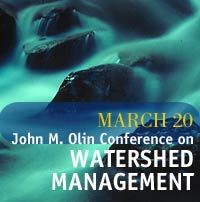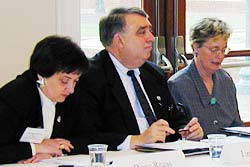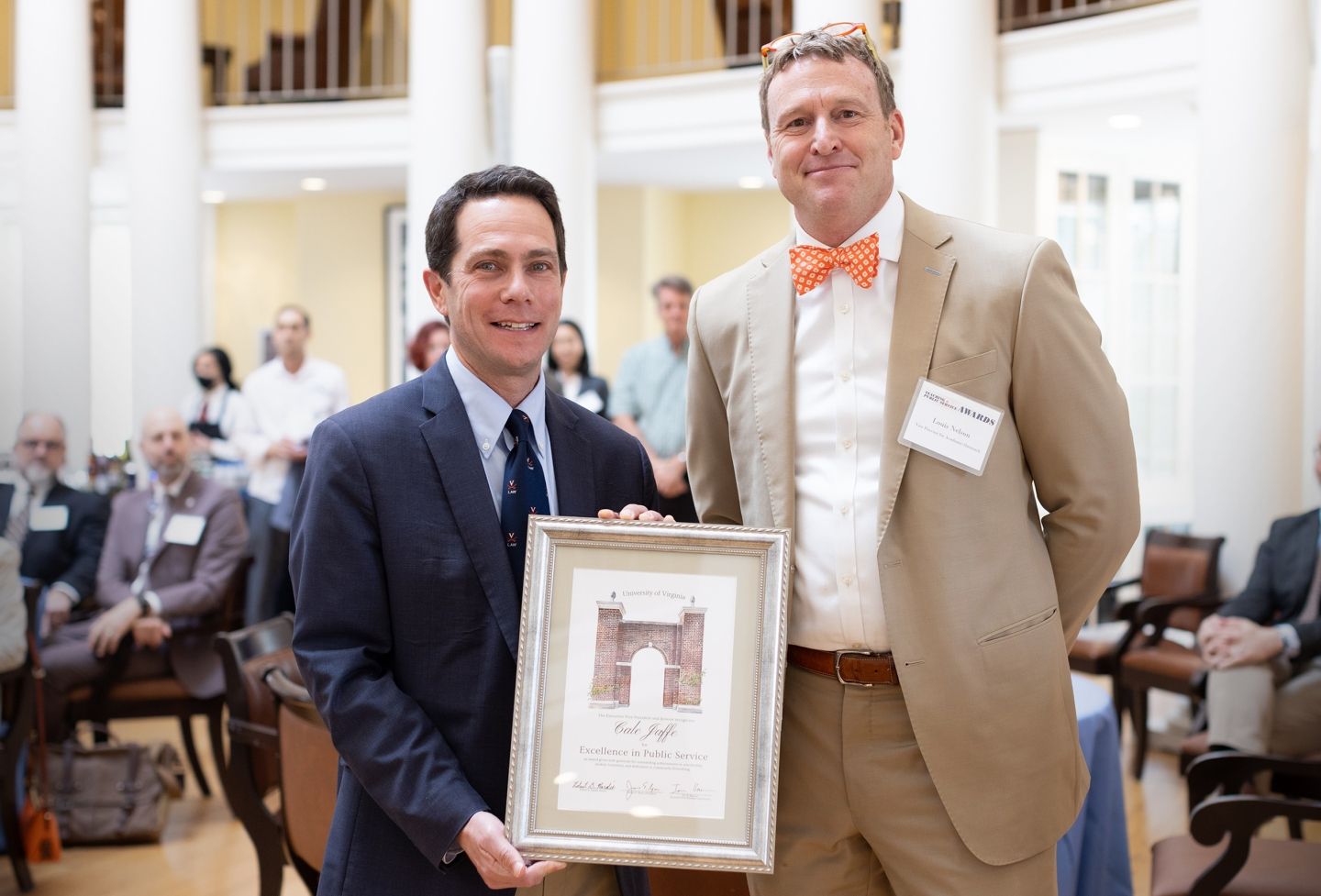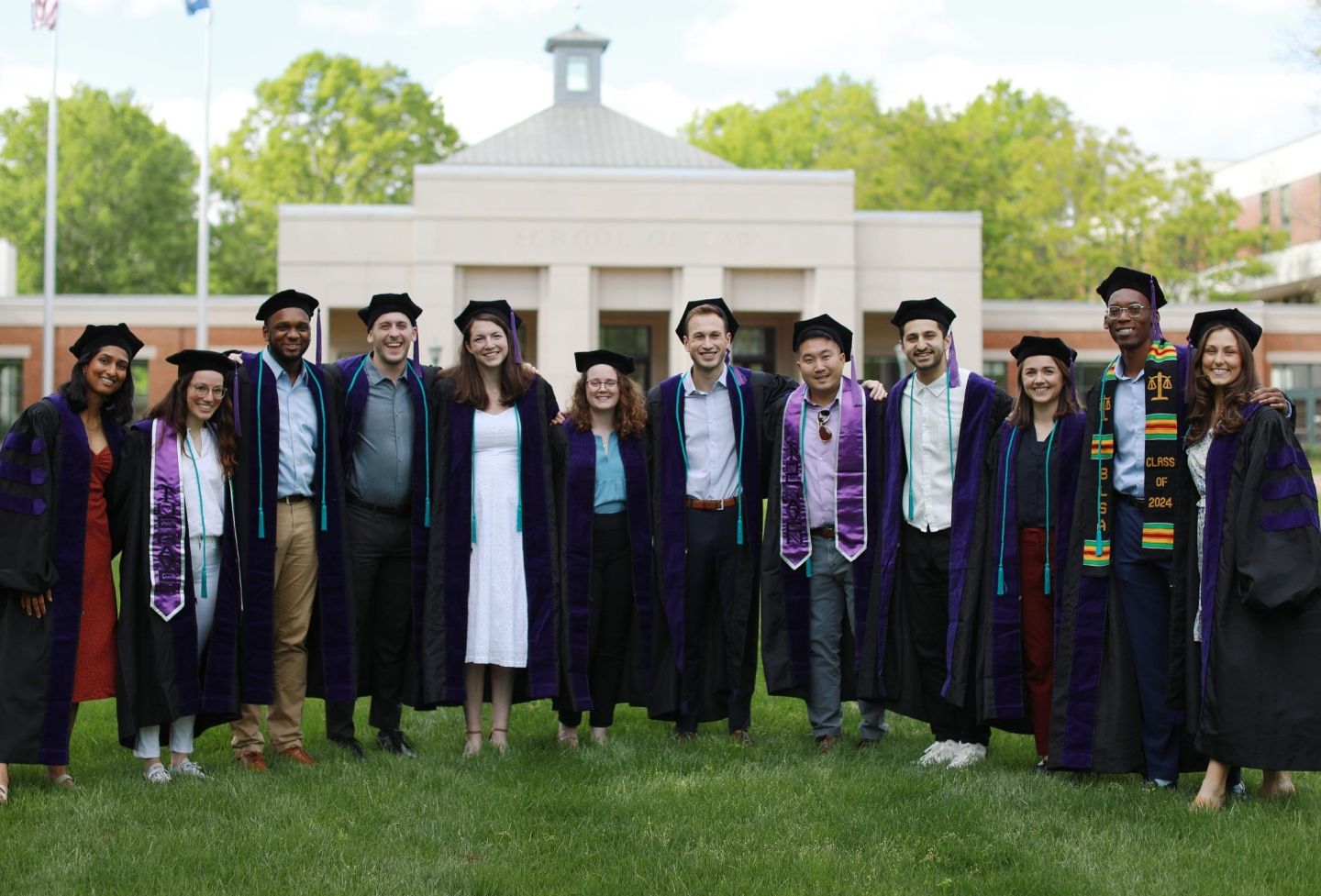Watershed Conservation Urged as Response to East Coast Drought
 Markets for distributing water in the eastern United States are unlikely, a panel of experts at the John M. Olin Conference on Watershed Management March 20 agreed, because water shortages here are not chronic enough to cause markets to form.
Markets for distributing water in the eastern United States are unlikely, a panel of experts at the John M. Olin Conference on Watershed Management March 20 agreed, because water shortages here are not chronic enough to cause markets to form.
With memories of last year's drought still fresh, the conference was convened to consider how greater supply needs could be met without compromising environmental goals for rivers and watersheds.
"I don't anticipate a lot of change in the East," said Stanford University law professor Barton Thompson, as outside the conference room two inches of rain saturated central Virginia. "People have short memories for drought conservation methods and give them up promptly when the drought's over."
"Water is special as an environmental concern," said University of Chicago economist Donald Coursey, who is involved in planning water supply solutions for the Great Lakes region, which is also experiencing a drought. "People are much less tolerant of anything less than absolutely pure water, but they are generally ignorant of how their water systems works. It's very easy to get people scared about water. It's very hard to get them unscared."
"In the East, water supply is still not enough of a problem to get anyone's attention," explained economist Leonard Shabman, a resident scholar at Resources for the Future. "Forty-three inches a year means it's not a problem except in rare years. There isn't enough need for market here to go through the set-up costs of creating one. Look at Florida and their water problem. Why hasn't a market started there?
"One reason is no one in government knows enough about water supply," said Shabman, who was a water commissioner for Virginia when Charles Robb was governor. "It's the same issue, the same story, over and over again.
"Urban water supply expansion is about inter-basin transfers, but those are really about inter-jurisdictional transfer," he said. "The issue is the crossing of political boundaries. What we have is a political fight over an abundant resource and who gets to control it. We have jurisdictional antagonisms that are totally unconnected to water. Look at Roanoke City and Roanoke County: one has a giant reservoir and the neighbor is under severe restrictions. Lake Gaston wasn't the best deal for Virginia Beach, but they couldn't get along with Norfolk. King William was not the best deal for Newport News; they should have gone to Gaston. But the problem is you can't cut the political deal."
Cities are perceived as having all the benefits from the transfers, Shabman said. "The compensation is to buy political acquiescence." What's happened historically, he added, is that "if they won't take the bribe, then you just take the water."
New environmental concerns, partly aroused by suburban sprawl, are changing the patterns. "The positions of the environmentalists tend to be non-negotiable and no compensation is adequate," Shabman said. "Environmentally motivated opponents to transfer can now oppose them effectively. We have a situation of gridlock."
Shabman proposed binding arbitration between jurisdictions as the answer. "The problem is the players may not participate. The environmentalist agenda is seen as benefiting most from arbitration. Cities feel they can wait and can get access to water once the public feels really threatened by shortage."
The panelists agreed on the imperative for cooperative watershed planning. Ideally, state lines would follow along natural watershed boundaries, Coursey said.
"We have to do a better job of maximizing the amount of water available," Thompson said, noting that Atlanta has had to abandon some watersheds because they were ruined by development.
There are two ways to maximize: protect natural watersheds, or "natural capital," as Thompson called it, or go to technological infrastructure, such as dams and filtration plants. "We can protect recharge areas or we can build aqueducts to distant supplies," he said.
"We've relied more on technology than natural capital solutions," Thompson said, "partly because we have traditionally hired engineers to run the systems and because scientific knowledge of wetlands has been low."
Clearly advocating natural capital investment, Thompson said practical measures would include reducing or forbidding farming in sensitive areas (to reduce erosion or the presence of pesticides) and containing sprawl. "We've lost billions of gallons of water recharge per year to new pavement."
Research shows that every dollar spent on wetlands preservation saves seven in avoided treatment costs, plus having flood control and some recreation benefits, he said, adding that national forests were created partly because of their water benefits.
"We've got to invest in natural capital solutions and get suppliers to buy and protect forests and wetlands." He cited New York City's conservation purchases in the Catskills and Delaware River Valley, which they copied from Dutch practices, as a cheaper provision for water than the construction of more filtration plants.
The obstacles to that direction, Thompson said, are that "we aren't sure exactly which lands to protect, we can't measure the avoided costs that don't actually come up, we can't prove that the additional water supply is due to the conservation program," and equity issues related to property. "Some people think that the owners of the forests don't have the right to do anything that would harm the water from them and they are reluctant to pay the owners for land. People in rural areas feel forced to sacrifice their value for the benefit of the cities."
Some propose markets as a forum for negotiating those differences, Coursey said, "because the law of water economics is immutable: water flows uphill toward money."
"Markets have the property of making things do things efficiently," he said, but there are several reasons they are difficult to establish. Historically, the United States has not used markets but "command and control and injunctions," Coursey explained.
"You have to pay a lot of attention to values and behaviors about water," Coursey said. "We're not very good yet at answering tradeoff questions about alternative uses. We don't know how much quality people are willing to give up for more quantity or more wetlands. Second, there are multiple government authorities over water questions and there are several different approaches, so it is hard for people to think holistically."
A deeper problem is public ignorance about environmental contexts, Coursey said. "If you ask people to identify environmental issues they say global warming, deforestation and ozone depletion. But if you put them in their house and ask them how they connect to the environment they don't know how their water system works or their electrical supply works or how agriculture impacts water."
One educational step would be standardize billing by pricing water by the unit, rather than lump it in with sewage or other utilities in order to raise public appreciation of usage habits.
He also urged the use of a credits system, such as those that exist for industrial air emissions, that would allow transfers between "those who can conserve cheaply and those who can't conserve cheaply." A credits structure would encourage innovations, he believes. "If I create a wetlands somewhere that creates a new clean water supply, can I get investment credit for that?"
He predicted "a legal avalanche" of challenges to current Great Lakes water management policies, which give every bordering American state governor or Canadian province premier veto rights over withdrawals. That veto could be challenged by Indian tribes whose reservations extend into the Lakes or whose treaties did not explicitly forfeit water rights. He told the story of an Indonesian freighter that was returning home empty when it decided to take on fresh water from the Lakes to sell in Indonesia. American officials forced it to pump the water back into the lake, but what if the ship had filled up inside reservation waters, Coursey asked. The Great Lakes are the largest freshwater reservoir in the world.

The panelists agreed that negotiated deals between political jurisdictions would be the first sign of an emerging market and an auction-like sale of surplus water would be the next sign. But all predicted the status quo will persist.
The conference also included a panel featuring Larry Tropea, executive director of the Rivanna Water and Sewer Authority; Kay Slaughter, a member of the Virginia Water Control Board and a senior lawyer with the Southern Environmental Law Center; and Diane Regas, director of the U.S. Environmental Protection Agency's Office of Wetlands, Oceans and Watersheds. The three gave presentations on local, state and federal policy related to water supply issues. Law professor Jonathan Cannon and visiting professor Dean Lueck moderated the conference.
Founded in 1819, the University of Virginia School of Law is the second-oldest continuously operating law school in the nation. Consistently ranked among the top law schools, Virginia is a world-renowned training ground for distinguished lawyers and public servants, instilling in them a commitment to leadership, integrity and community service.


